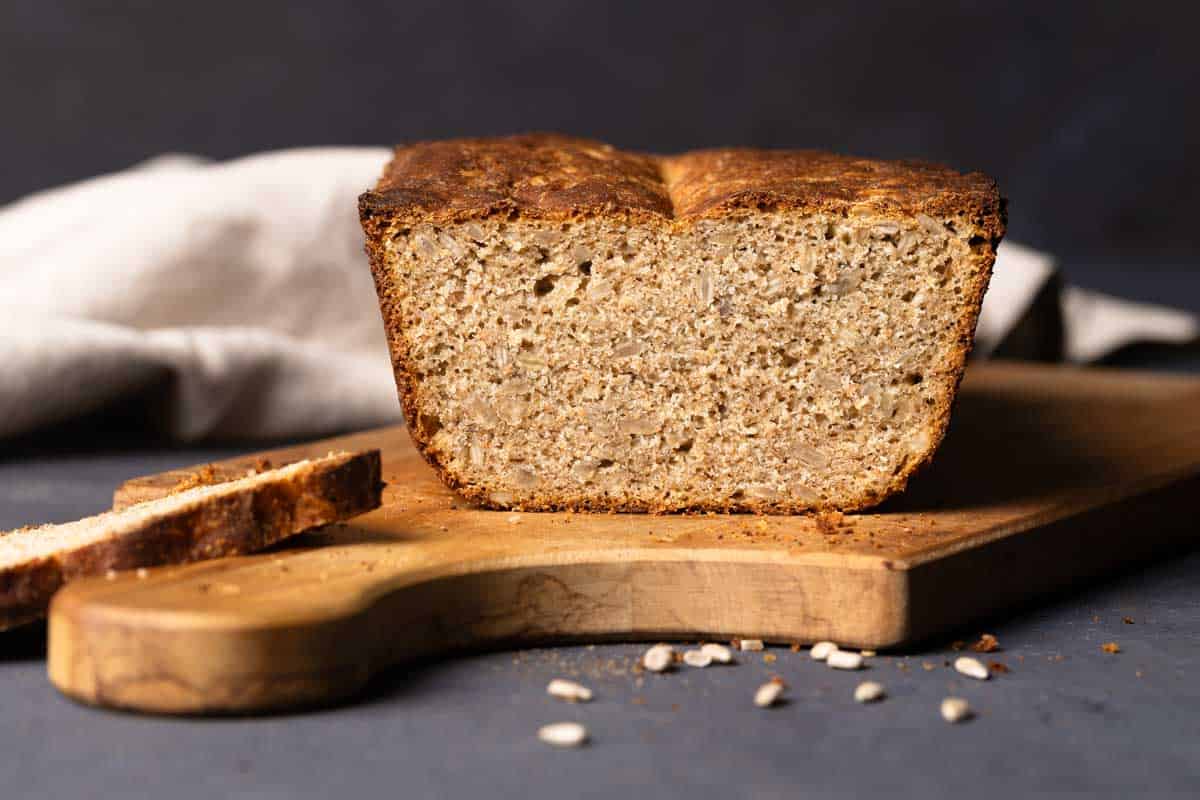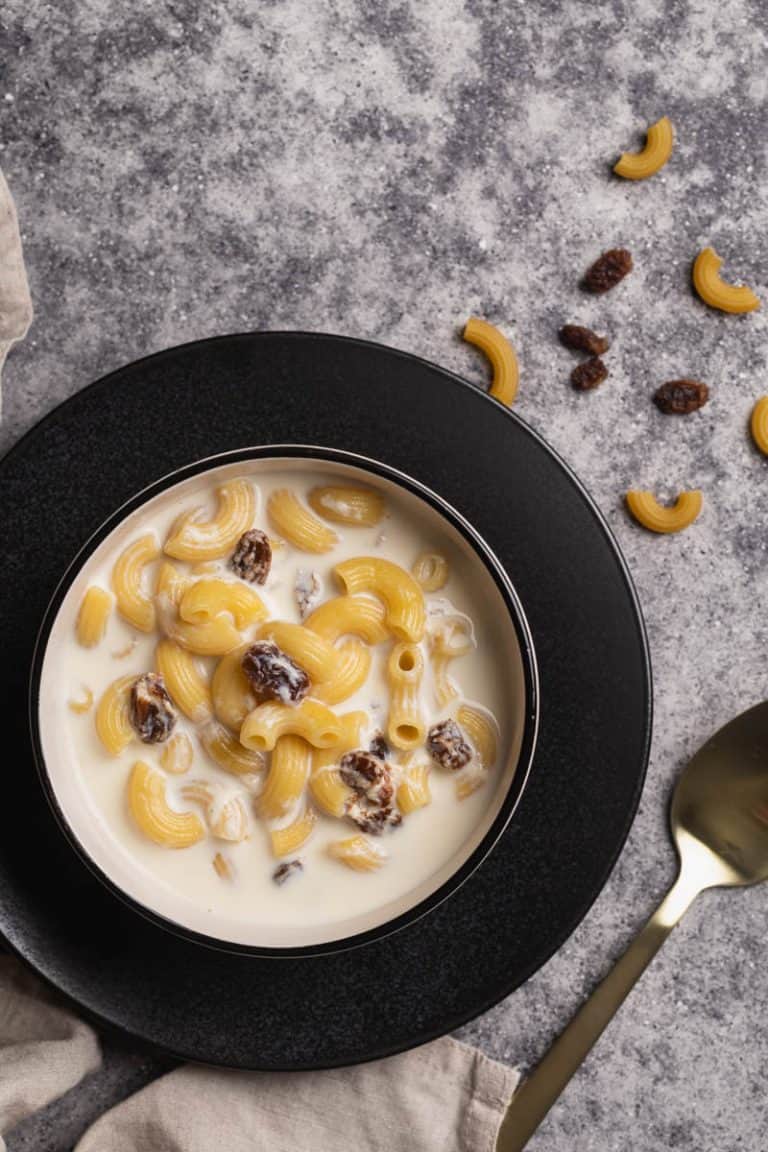Seeded Rye Sandwich Bread
This authentic German seeded rye bread combines rich, earthy notes of wholemeal rye flour with sunflower seeds, resulting in a hearty, wholesome loaf that’s perfect for sandwiches and canapés.

Authentic German rye bread
Growing up in Westphalia in Germany, rich rye bread has been a staple in my diet for many years. Although this whole rye bread isn’t as moist and hearty as the classic Pumpernickel, it’s incredibly quick and easy to make and offers the classic taste and texture of rye bread found in traditional German bakeries.
Why you’ll love this rye bread recipe
When it comes to homemade bread, few things are as satisfying as a warm, freshly baked loaf straight from your oven. If you’re looking for a wholesome baking project that delivers deep flavor and a hearty texture, this seeded rye sandwich bread is just the ticket:
- Easy to make: With only 8 ingredients and 20 minutes of hands-on prep time, even beginner bakers can create this delicious yeasted rye bread.
- Perfect for sharing: Whether you’re hosting a brunch, preparing a thoughtful gift, or bringing a warm loaf to a gathering, this wholesome bread is a crowd-pleaser that’s perfect for sharing.
Ingredients and substitutions
- Whole or dark rye flour – I mill my flour from rye berries but you can buy dark or whole rye flour from specialist or wholefood stores.
- Lukewarm filtered water – Use lukewarm filtered water at approximately 100°F (37°C).
- Active dry yeast – You can use instant yeast as a 1:1 substitute for active dry yeast. However, you won’t need to proof it in warm water; simply add it to the dry ingredients. Alternatively, you can use 1 tbsp of fresh yeast which needs activating as well.
- Granulated sugar – Light brown sugar can also help activate the yeast.
- All-purpose flour – You can also use bread flour. Check out my Flour 101 guide to learn more about the differences.
- Salt – I use pink Himalayan salt but any sea salt will work too.
- Olive oil – I use extra virgin olive oil but you can also opt for a lightly flavored oil such as sunflower oil.
- Sunflower seeds – or any seeds that you prefer including pumpkin, sesame, or flaxseeds.
Variations
- Go nuts: Substitute 1/2 cup of seeds with chopped nuts, like walnuts or hazelnuts, for an extra crunch.
- Caraway: Incorporate 1/2 tsp if caraway seeds for a more traditional rye flavor.
- Dried fruit: Substitute 1/2 cup of seeds with dried fruits such as raisins for a sweeter twist.
What’s the key to achieving the perfect rise for rye bread?
Achieving an ideal rise is crucial for the texture and flavor of your seeded rye bread as rye like many other ancient grains is low in gluten. The key lies in maintaining the right environment for the dough to expand. Here are some tips:
- Warmth: Ensure that the place where you let the dough rise is comfortably warm but not too hot. A temperature of around 75-80°F (24-27°C) is generally suitable. If your kitchen is cold, you can create a warm environment by turning on your oven at a low temperature for a few minutes and then turning it off before placing the dough inside.
- Covering: Use a damp cloth to cover the dough during its rising period. This helps prevent the surface from drying out and forming a crust, allowing the dough to expand freely.
- Patience: Don’t rush the rising process. Give the dough ample time to double in size, which typically takes about 1.5-2 hours. Rushing it may result in a denser loaf.

Serving
This seeded rye bread is perfect for making your favorite sandwiches. Enjoy it as a breakfast toast or serve it as part of a wholesome lunch. Try it with some creamy lemon pesto or cold cuts of meat such as salami or prosciutto. The hearty, nutty flavor will be a hit with the whole family.
Recipe FAQs
Yes, you can use a breadmaker to bake this rye bread. Simply use a program for rye bread or choose one with a 10-15 minute kneading time and a long rise of 2-3 hours.
Store it in an airtight container or a plastic bag at room temperature for up to 3-4 days. Store it in the refrigerator if you’re living in a humid climate. You can also freeze slices for up to 3 months for longer storage.
While it’s possible to use 100% rye flour, be aware that rye flour doesn’t have the same gluten content as wheat and the texture will be different. I recommended mixing it with a portion of all-purpose flour for better results.
Related recipes
For more homemade bread recipes, check out the following articles:
If you loved this Seeded Rye Bread Recipe or any other recipe on my website, please leave a 🌟 star rating below. Thank you!
Seeded Rye Sandwich Bread
Ingredients
- 1 1/2 cups lukewarm filtered water
- 2 tsp active dry yeast
- 1 tbsp granulated sugar
- 350 g whole rye flour
- 150 g all-purpose flour
- 1 1/2 tsp salt
- 3 tbsp olive oil
- 1 cup sunflower seeds
Instructions
- In a bowl, combine warm water, yeast, and sugar. Let it sit for 5-10 minutes until frothy.1 1/2 cups lukewarm filtered water, 2 tsp active dry yeast, 1 tbsp granulated sugar
- In a large mixing bowl, combine rye flour, all-purpose flour, 1 cup of sunflower seeds, and salt.350 g whole rye flour, 150 g all-purpose flour, 1 1/2 tsp salt, 1 cup sunflower seeds
- Pour the yeast mixture into the flour mixture. Add olive oil and mix until combined. Knead for 10 minutes. The dough will be clay-like and extremely sticky.3 tbsp olive oil
- The the dough into a ball and place it into a clean bowl. Cover it with a damp cloth and let the dough rise in a warm place for 2 hours, or until doubled in size.
- Preheat your oven to 375°F (190°C). Transfer the dough to a greased and floured loaf pan. You can also shape it into a round or oval loaf.
- Let the shaped dough rise for another 30 minutes, or until it reaches just above the rim of the pan.
- Bake in the preheated oven for 30 minutes until dark brown. Check its crust after 20 minutes and cover it with baking paper if needed.
- Remove the rye sandwich bread from the pan and cool it completely on a wire rack before slicing.







